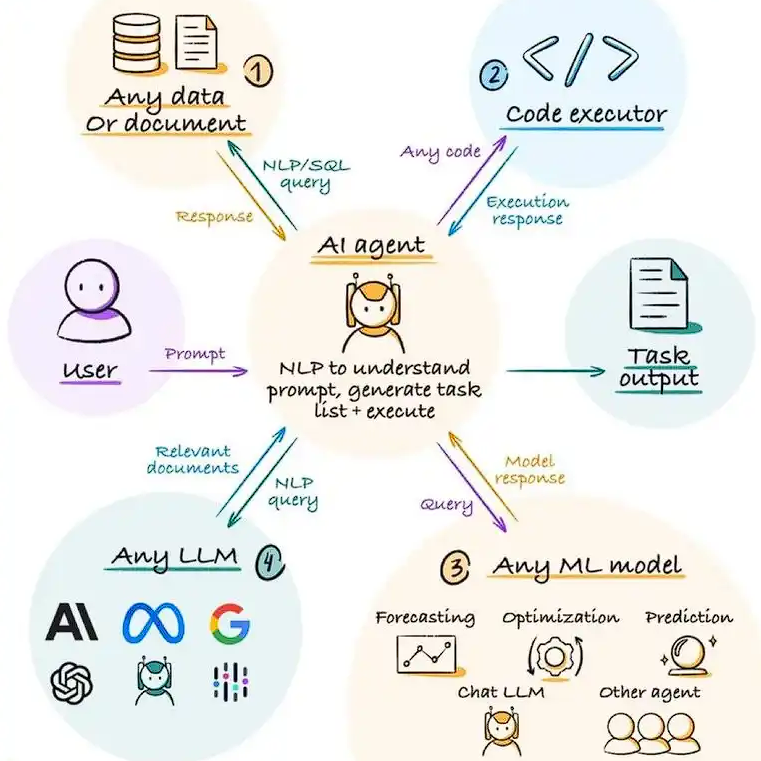In the swiftly changing realm of artificial intelligence (AI), the emergence of personalized AI agents has become more widespread. These agents, capable of performing tasks, making decisions, and even interacting with users, are at the forefront of innovation across various industries.
From virtual assistants to chatbots and game characters, custom AI agents are revolutionizing how we interact with technology. In this comprehensive guide, we’ll delve into the process of building a custom AI agent from concept to implementation, exploring the key steps, considerations, and best practices involved.
Understanding Custom AI Agents
Before diving into the development process, it’s crucial to understand what a custom AI agent entails. Custom AI agents are like your personalized digital assistants, but smarter and tailored specifically to your needs. They’re designed to help you with tasks, answer questions, and even just chat with you. Unlike generic assistants, these agents learn from your interactions with them, becoming more useful and relatable over time. You can use them for various purposes, from organizing your schedule to managing your finances. They’re continuously learning and improving, just like a good friend, making them invaluable companions in your digital life.
The Connection Between AI Agents and Blockchain
First, it’s essential to understand how AI agents actually operate—this helps us identify which crypto projects genuinely fall under the scope of AI agents and which are merely riding the hype.
Bots in the GPT Store might give people an intuitive sense of AI agents, but in principle, what kind of product qualifies as one?
The author believes that determining whether a product is an AI agent boils down to one key question:
“Is it a program or device that uses AI technology to autonomously execute tasks or assist users?”
From simple chatbots to complex automated systems, all can be considered AI agents—but they must meet at least the following criteria:
- Automation: Capable of performing tasks with little to no human intervention.
- Environmental Perception: Able to sense its operational environment via sensors or data input.
- Decision-Making: Can make decisions based on its programming and incoming data.
- Learning & Adaptation: Possesses learning capabilities to improve performance based on new data and experience.
- Interactivity: Can engage with human users or other systems, responding to requests or providing information.

If we abstract these features, we might notice that AI agents somewhat resemble Ethereum smart contracts:
“Given preset conditions, execute outcomes automatically.”
So, to distinguish whether a project is genuinely leveraging AI agents or just repackaging smart contracts with AI buzzwords, we can focus on one key dimension:
“Does it exhibit agency?”
Smart contracts lack autonomy—they are purely reactive, operating only based on pre-written rules without the ability to make independent decisions in response to environmental changes.
Example: “You set a specific price to buy a token at a predetermined time.”
In contrast, AI agents are typically active—they can gather data, learn, make decisions, and initiate tasks without external commands.
Example: “Monitor market data and buy a token at a price the AI deems optimal for profit.”
This distinction clarifies whether a project is truly AI-driven or just smart contract automation with an AI label.